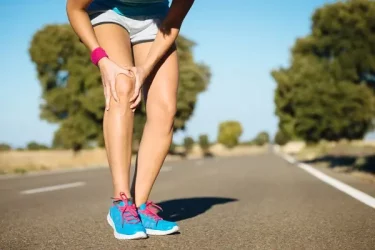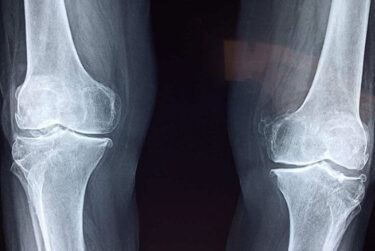It’s the same every summer. You watch the Tour de France in awe as lycra-clad heroes struggle up impossible climbs while the colourful peloton snakes its way through scenic Alpine valleys. Suddenly you get the urge to hop on your bike and imagine yourself pedalling away to victory wearing the yellow jersey. And then you remember you haven’t ridden your bike in years and the tyres are probably flat.
It’s not too late though and every year, the Tour de France provides great inspiration for thousands of people to get back into cycling. Riding a bike is a great way to exercise, but if you’ve recently had a knee replacement operation how should you get back in the saddle? Join us as we look at some top tips on cycling after knee replacement surgery.
Wellsoon self-pay surgery
Choose Wellsoon self-pay surgery from Practice Plus Group. With no hidden costs, you’ll pay less than you might think and be back to your best sooner than you thought.
- Surgery in 4 to 6 weeks*
- No hidden costs
- Flexible finance options
To chat about Wellsoon self-pay surgery options, call our Private Patient Advisors today, on 0330 818 8945. Alternatively, you can email us on privatepatient@practiceplusgroup.com

Can I cycle after a knee replacement?
Getting back into cycling after knee problems, knee injuries, or joint replacement surgery requires some care. However, it’s perfectly possible if your overall health allows and your doctor has given you the go-ahead. After all, there are plenty of athletes that have had knee replacements! And if they can do it, why can’t you?
Get back to pain-free riding and a perfect pedal stroke after surgery by following our tips for a full and safe recovery.
How soon can I cycle after a knee replacement?
We get it. You’ve just had your knee replacement and you’re watching your cycling heroes battle it out in the Tour de France. You’re counting down the days until you can get back on the bike. But patience and hard work are crucial after your knee replacement operation.
We’ll give you some great exercises to help build muscle strength and range of motion in your legs and new knee. Some of those exercises may involve a stationary bicycle.
For the first couple of weeks after knee arthroscopy or knee replacement surgery, your priorities will be decreasing the swelling around your knee and attaining a full range of motion. While cycling is recommended as an effective form of exercise after knee surgery, returning to the bike depends on your post-surgery mobility.
At around the six week mark, your physio or consultant may recommend you start riding a stationary bike. This won’t put your new joint under any stress and helps to promote your range of motion while also strengthening your knee.
Outdoor cycling will typically be recommended around 12 weeks after your surgery. You should keep rides short, stop if you experience pain. As always, be sure to check with your consultant before getting back on your bike.
Cycling after total knee replacement surgery
If you’re a keen cyclist, the good news is getting back in the saddle is one of the activities recommended by doctors during recovery. You can expect to be back on a stationary bike within two weeks of your knee operation. Cycling on the road may take up to 12 weeks post-operation.
Cycling after a partial knee replacement
Similar to total knee replacement patients, you should follow the advice of your doctors and physios when it comes to getting back in the saddle. Static bikes are encouraged after two weeks. You can expect a return to road cycling between 8 and 12 weeks after surgery1.
Long distance cycling after a knee replacement
It’s strongly advised to build up your distances slowly after knee replacement surgery. However, if you follow the recovery plan and work to strengthen the muscles around the knee, you should be able to return to long distance cycling after a few months.
Competitive cycling after knee replacement
This will depend on a few factors, namely:
- your age
- the type of competitive cycling you do
- the success of your recovery
- your resolve to get back to the top!
Have a chat with your consultant about what you want to achieve post-surgery. This will give him or her an idea of what’s possible for you.
Mountain biking after a knee replacement
Just as with road cycling, you can expect to return to mountain biking up to 12 weeks after your operation. Following the advice and knee replacement recovery plan of your physio may help get you back in the saddle sooner.
The only real difference between mountain and road cycling is the increased risk of falling off. Uneven and unpredictable terrain can increase the chances of you falling off and damaging your new knee. Therefore, extra care should be taken when cycling off-road.
Tips for cycling after knee surgery
Riding a bike can be really beneficial after knee surgery, but you should always seek advice from your physiotherapist or GP before you ‘saddle up’.
The following tips will help you get back riding a bike after a knee replacement:
- Make sure that you have reached an appropriate level of strength and range of motion which makes cycling safe – check with your physiotherapist or GP
- Set the seat height correctly by sitting on the saddle with your ‘operated on’ knee straight down and resting on the pedal. You should have a slight bend in your knee when the pedal is at its lowest point. Make sure you and the bike are supported before you try this! Or, have a professional bike fitting.
- Start pedalling slowly, and when you start you might not be able to pedal all the way around, which is normal. Pedal until your operated knee bends as far as you can tolerate
- When your knee is bent as far as it will comfortably go hold the position for a few seconds and then pedal backwards until your knee once again bends as far as you can tolerate. Hold the position for a few seconds and slowly pedal forwards again. Repeat backwards and forwards for a few minutes and it is likely that you will notice a rapid improvement in your range of motion, to the point where you will be able to pedal round fully
- Your knee must be able to bend about 90 degrees before you can fully pedal on a bicycle – your physiotherapist will be able to measure your range of movement and let you know when this has been achieved
- Start building light resistance gradually, to help improve the strength and endurance of your leg muscles – your physiotherapist will be able to give you advice on how much resistance to add and when. You might experience some knee discomfort, but this is to be expected and will ease over time
- If you feel a sharp knee pain while cycling, stop and see your physiotherapist as soon as possible.
Pain in your knee?
If you’re experiencing knee pain, try our knee suitability quiz. It will give you an idea of whether you’d benefit from booking a consultation with one of our knee specialists.
The best exercises to do after knee arthroscopy or replacement
In the early days post surgery, your physio may recommend certain exercises after knee replacement. These will likely include exercises aimed at strengthening the quads, hips and glutes. Doing these will help you return to carrying out daily activities.
Walking
In the weeks following the operation, walking is one of the best activities you can do to help make a full recovery. Following the operation, you’ll likely use crutches or a walker to get around. As your knee heals, your surgeon or physio will advise on how to start putting weight on your leg.
Using the stairs
If you don’t live in a bungalow, you’re in luck! Climbing the stairs is an excellent activity that strengthens the new joint, while promoting endurance and flexibility.
What should I avoid after knee arthroscopy?
As with knee surgeries, you should avoid activities that put a strain on your knee. These include running, jumping, and playing physical sports with an increased chance of falling over. You should also look to avoid long periods of inactivity and sitting in chairs that are low to the ground.
Looking for a solution to knee pain? Find out how to spot the signs you may need a knee replacement.
Our team is dedicated to delivering high-quality treatment to our patients while also ensuring they feel as comfortable as possible throughout their stay with us.
Sources and references

Acknowledgements
Knee replacement and cycling FAQs
Not quite found what you’re looking for? Maybe our FAQs can help! Take a look at the questions and answers below to find the information you’re looking for.
If you’re a cyclist, you’re in luck! Along with swimming, golf and walking, cycling after knee arthroscopy is one of the best activities you can do. This is because it doesn’t place the knee joint under any weight-bearing strain like other high-impact sports. Static bikes should be used in the first few weeks after your operation.
Your doctor or physio will advise a recovery plan. It may include cycling, but is likely to be limited to a static bike without resistance. As the muscles around the knee strengthen, you should be cleared to return to cycling outside.
Very. In fact, one of the first recommended activities following your knee replacement is on a stationary bike. This is because cycling puts minimal stress and strain on the knee.
To start with, your doctor or physio will likely recommend turning the pedals until you can complete a full revolution. Cycling without resistance for up to 30 minutes a day is then advised. After around 12 weeks, you should be able to return to cycling outdoors.
Doing too much too soon after surgery will put undue strain on a new knee joint and could result in serious damage. Likewise, cyclists that had knee surgery years ago can still wear out their joint. This can be due to the repetitive nature of pedalling or an inadequate seat position.
Ideally one that has no chance of falling over! You should start with a stationary or recumbent bike. These will let you control the speed and resistance without the danger of falling off or overdoing it. After a few weeks of this, your consultant may recommend getting back out on the road proper. In this case, mountain bikes will give you more stability and protection from hazards such as potholes.
The effectiveness of recovery varies from person-to-person. For some, the non-weight-bearing aspect of cycling will be hugely beneficial when on the road to knee replacement recovery. While for others, activities like walking or swimming will be more their bag. Have a chat with your consultant about the best course of action for you.
Mostly, yes. Along with walking, swimming, and golf, cycling is one of the best non-weight-bearing activities you can do. Provided you don’t fall off!
There are a few things you can do to protect your knees. These range from ensuring your saddle is at the right height and not putting undue pressure on your legs to making sure you warm up properly before each ride. Knee pads can help in the eventuality of falling off, while wearing adequate footwear could also help in the long run.






